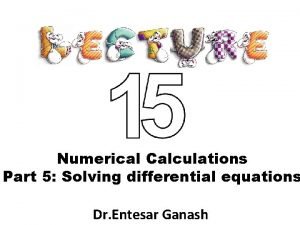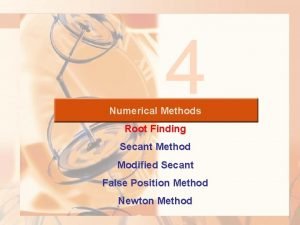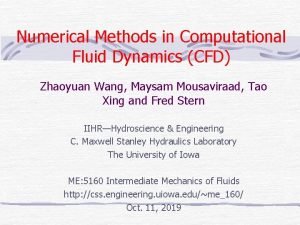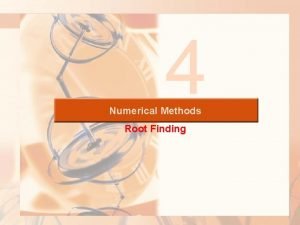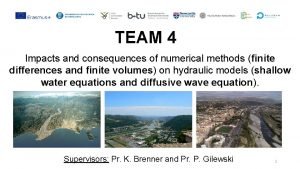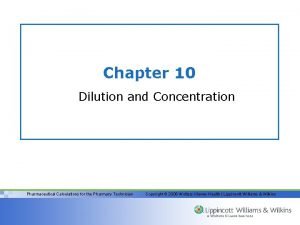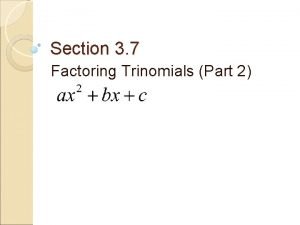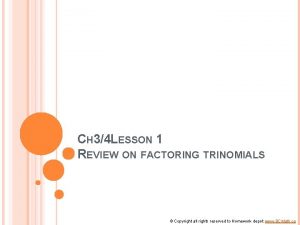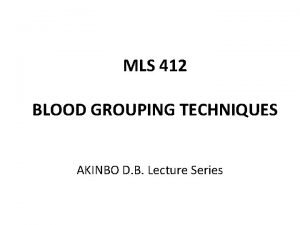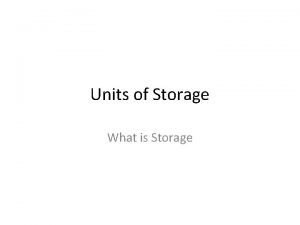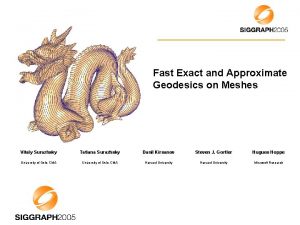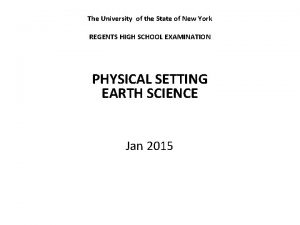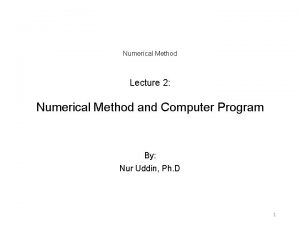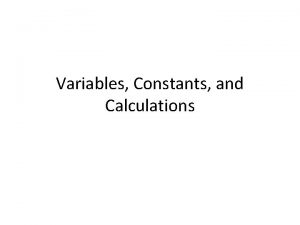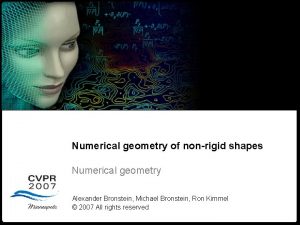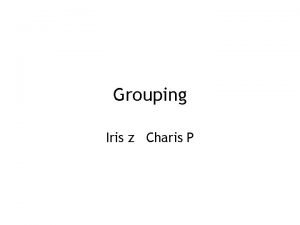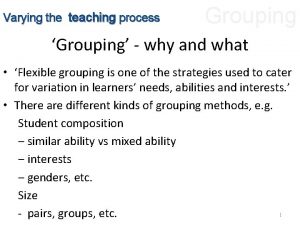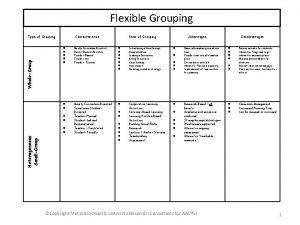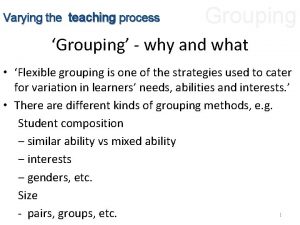Grouping Method for an Approximate Numerical Calculations of




























- Slides: 28

Grouping Method for an Approximate Numerical Calculations of Helium-vacancy Cluster Evolution in Solids during Irradiation or Annealing S. I. Golubov, S. J. Zinkle and R. E. Stoller Materials Science & Technology Division Oak Ridge National Laboratory, HAPL Ion Transport and Surface-Thermomechanics in W and Si. C Armor Workshop UCLA, Los Angeles May 15 -16, 2006

OUTLINE • • • Modeling of He-vacancy clustering Master Equation New grouping method Applications of the method He retention in W (UNC experiment) Conclusions

He-vacancy cluster evolution under irradiation or ageing • Mechanisms: • • • Absorption of newly created, injected or re-dissolved He atoms Absorption of point defects Thermal evaporation of He atoms and vacancies Radiation-induced He resolution Cluster coalescence • He transport: • • • He in interstitial configuration He in substitution configuration (He-2 V clusters) Brownian motion and coalescence

Methods used to describe He-vacancy cluster evolution Homogeneous approach • • Analytical models (nodal line method, di-atomic nucleation, . . ) Master Equation (discrete rate equations) Fokker-Plank equation (continuous variables) Momentum method Hybrid methods (ME for small size clusters and F-P/MM equations for larger ones) Non Homogeneous approach • Monte-Carlo Master Equation is basis for homogeneous approach

Two-dimensional Master Equation x- number of vacancies m- number of He atoms in a cluster

Conservation Laws. I. Total number of clusters - boundary fluxes

Conservation Laws. II. Total number of point defects in clusters S(t) – swelling, M(t) – total number of He atoms an clusters. , - volume fluxes , ,

Rate Equations for mobile defects Equation of State (Trinkaus et al. 1982)

New grouping method Approximation for SDF within a group - group widths in x and m spaces

Grouping Scheme + mean x, m fluxes 10 fluxes required only

Coalescence via Brownian motion

Dose dependence of defect accumulation

SDFs calculated using the grouping method

Size distribution functions after 1 h annealing at 700, 800 and 900 o. C 1/10

Comparison with experiment TEM measurements Calculations

Impact of Equation of State on bubble evolution during annealing

Experimental observations of He retention in tungsten foil (Hashimoto et al. *) Proton spectra for single crystal tungsten implanted at 850 o. C and flash annealed at 2000 o. C in 1, 100, and 10000 cycles to a total dose of 10 19 He/m 2 *) Fusion Science and Technology 47 (2005) 881

Defects and Helium generation profiles in UNC experiments

Model Description • It is assumed that the problem may be simulated by considering a foil with thickness of about 0. 7µm uniformly irradiated with He ions • Sink in the form of foil boundaries is treated by using continuum approach • Point defect generation and He generation rates in the foil are equal to Gpd =2. 5*10 -7 dpa/s and GHe =2. 5*10 -9 1/s, respectively • Total flux of He ions of 1019 ions/m 2 corresponds to accumulation of about 250 appm He • Duration of 1 step irradiation is equal 102 s in the case of 103 cycles, 103 s in the case of 102 cycles and so on; total time of irradiations is equal to 105 s • Duration of one step of flash annealing is equal 10 s • He atoms diffuse interstitially and are captured by vacancies, He-vacancy clusters and foil boundaries

Flash annealing regime used in the calculations

Sink strength of foil boundaries where is sink strength of foil interior defects

Parameters used in the calculations He dissociation energies, Edis, for m. He+1 V clusters m Edis (e. V) 1 4. 5 2 3. 75 3 3. 46 4 3. 11 5 2. 89 Evf =4. 13 e. V, Evm =1. 95 e. V, EHem=0. 24 e. V , Eim= 0. 15 e. V Ω=1. 585*10 -29 m-3 , γ=2. 8 J/m 2, Zv=1. 00, Zi =1. 25 Edis=4. 5 e. V at x>1 (Van Veen)

Evolution of cluster size distribution function during 1 step irradiation Red curve - equilibrium trajectory

He accumulation during the implantation

He accumulation during irradiation/flash annealing in 10 steps cycle He practically does not release crystal during an annealing step

He accumulation during irradiation/flash annealing in 100 steps cycle He releases crystal during each annealing step however the total amount of He accumulated in the clusters continuously increases- during 5 cycles 30% of He implanted are stored in the clusters.

He accumulation during irradiation/flash annealing in 1000 steps cycle He fully release crystal during each annealing step

Conclusions • He releases crystal already during irradiation. However the effect is significant at small implantation doses only • He fully release crystal during each annealing step in the case of 1000 cycle • He practically retained in crystal in the cases of 100, 10 and 1 cycles
 Numerical calculations
Numerical calculations Structural steel connection calculations calculations
Structural steel connection calculations calculations Secant method example problems with solution
Secant method example problems with solution A building bent deflects in the way same as a:
A building bent deflects in the way same as a: Graphical and numerical methods
Graphical and numerical methods What is cfl number in cfd
What is cfl number in cfd Birge vieta method examples
Birge vieta method examples Integration example
Integration example Numerical method
Numerical method Pharmacy concentration and dilution practice problems
Pharmacy concentration and dilution practice problems Estimating earthwork volumes
Estimating earthwork volumes How to factor using cross method
How to factor using cross method Abo grouping gel card method procedure
Abo grouping gel card method procedure Cross factoring method
Cross factoring method Blood grouping tube method
Blood grouping tube method The process of grouping things based on similarities
The process of grouping things based on similarities Disadvantages of symposium
Disadvantages of symposium Megabyte
Megabyte Approximate computing
Approximate computing Board ga,e
Board ga,e Sonnet example
Sonnet example The approximate dates of the baroque period are
The approximate dates of the baroque period are What is consonance
What is consonance Fast exact and approximate geodesics on meshes
Fast exact and approximate geodesics on meshes A guided tour to approximate string matching
A guided tour to approximate string matching Approximate computing
Approximate computing Approximate counting algorithm
Approximate counting algorithm The diagram below represents the placoderm fish
The diagram below represents the placoderm fish Two focal points of fingerprint
Two focal points of fingerprint
